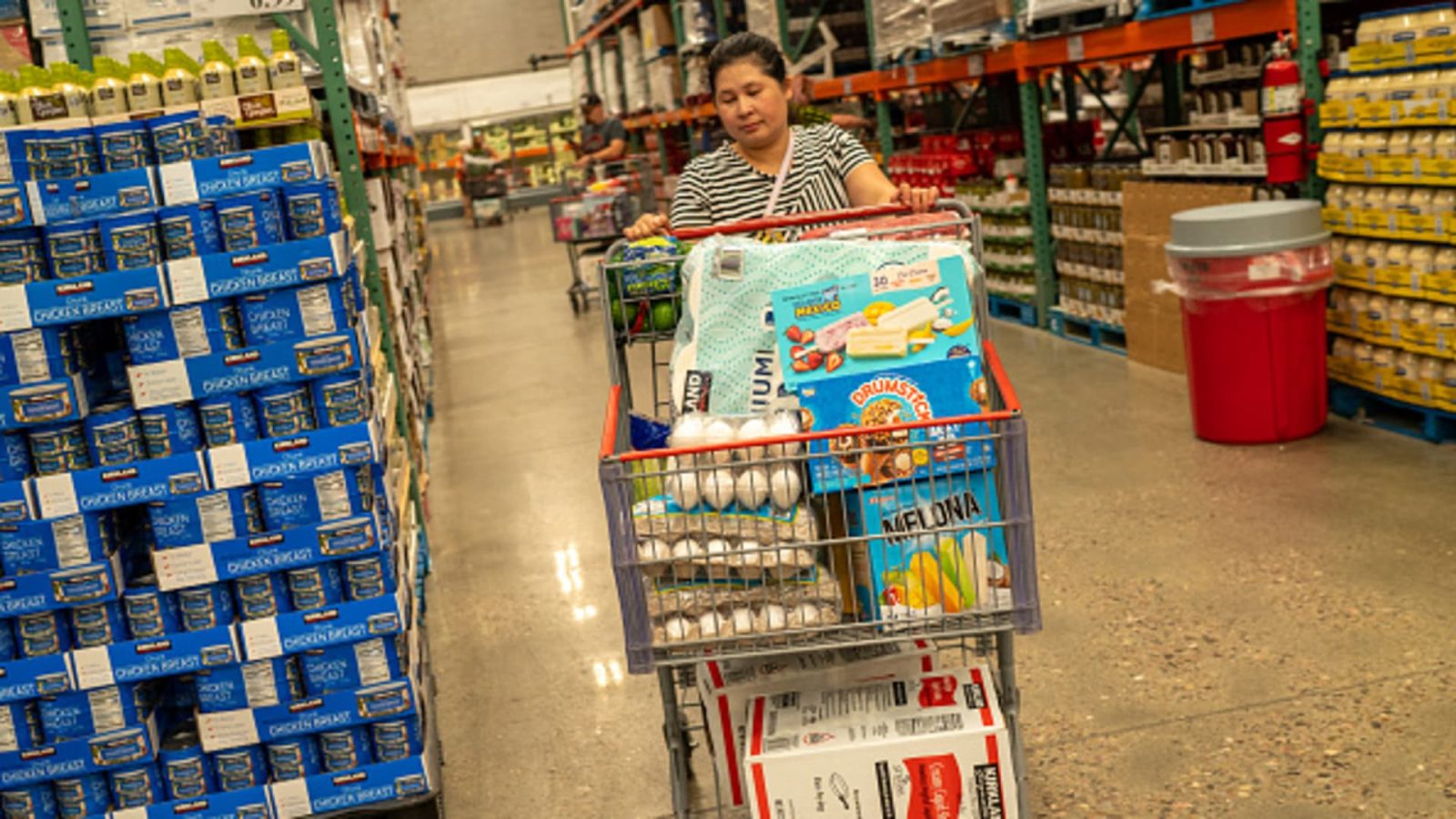This week’s government economic data revealed pockets of durable consumer spending despite sticky inflation, signaling a favorable quarter ahead and further upside for two of our retail stocks. First the numbers The consumer price index, a measure of retail inflation, saw its biggest monthly increase this year — a seasonally adjusted 0.6% gain in August that matched estimates. Higher energy costs were mostly to blame, including a 10.6% rise in gasoline prices. However, even without the often volatile energy and food components figured in, core CPI in August rose a greater-than-expected 0.3%. With gas prices soaring last month along with the recent spike in oil ( West Texas Intermediate crude topped $91 per barrel Friday), retail sales in August powered 0.6% higher , way more than the 0.1% gain that economists had expected. Much of that advance reflected higher energy costs making their way into the economy. Sales at gas station sales rose 5.2%. Despite stubborn inflation, shoppers continued to spend money, and not just on gas, a trend both Amazon (AMZN) and Costco (COST) have been able to capitalize on, offering their loyal customers lots of value for their money while offering shareholders growing retail sales. Shares of Costco have gained more than 20% year to date, while Amazon has jumped 67% in 2023. Case for Amazon August sales at non-store retailers — mainly representing consumer activity on e-commerce platforms — picked up in August and July from the levels since in June, a positive indicator for the first two months of the third quarter. Since Amazon is the largest e-commerce retailer, the government data suggests Amazon sales in the third quarter should be positive sequentially. Bolstering that view, Amazon saw record sales from its two-day Prime Day event in July. Only months after Prime Day, Amazon will hold a Prime Big Deal Days sale in October to kick off the holiday season shopping. The event is expected to lead to sales growth toward the back half of the year, according to Barclay’s. The analysts there also view “Amazon’s retail business to be a steady grower with improving unit economics,” as the company adds new merchants through programs like Buy with Prime. AMZN YTD mountain Amazon YTD performance In addition to boosting sales, we’re also encouraged to see Amazon doing everything it can to control costs. Management has consolidated its fulfillment network into eight regional distribution centers, reducing delivery touchpoints and overall providing faster and less expensive delivery services to Amazon customers. By consolidating its fulfillment network, Amazon was able to achieve a second-quarter North American operating margin of 3.9%, with a 620-basis-point improvement over the average of the last five quarters. Morgan Stanley on Thursday praised Amazon’s management for its potential to improve retail profitability, naming it a top pick. Analysts point to three levers of improving North American retail profitability that can drive 2025 margins back to 2019 levels and GAAP earnings-per-share to $5 or higher. (GAAP stands for generally accepted accounting principles, the gold standard in financial reporting.) If Amazon shows an “efficiency upside” across (1) shipping and fulfillment costs, (2) discipline in global content spend, and (3) improved merchandise margins, Morgan Stanley said shares could see “20% to 60% upside from here.” The firm has an overweight, buy-equivalent rating on the stock and $175-per-share price target. Jim Cramer said Thursday if Amazon can show margin improvement, he will no longer be critical of its cost structure, which he has described as bloated on the retail side with way too many employees still on the books after the unprecedented Covid-pandemic demand spike for online shopping and home delivery has normalized. Case for Costco Strong August retail sales numbers also bode well for Costco which essentially sells most items listed in the government’s dataset. According to Jim, Costco has been doing so well because “the consumer seems very intrigued by bargains,” as they’ve dealt with high inflation for over a year. Costco is set to release its fiscal fourth-quarter earnings on Sept. 26. Unlike other companies, Costco reports its sales monthly, so we’re able to see how the wholesale giant’s trends are lining up against what the government is seeing. For August, Costco said U.S. sales rose 2.8% from a year ago, slightly edging out the year-over-year, inflation-adjusted 2.5% gain in U.S. retail sales overall, reported by the Commerce Department. Higher fuel costs for the month may have been a factor that impacted consumer expenses. It also could drag down discretionary purchases since people theoretically have less money in their budgets to spend on stuff they want versus stuff they need. While higher gas prices help boost Costco’s top line, investors are more focused on monthly U.S. sales, excluding fuel and foreign exchange fluctuations. That number at Costco rose 3.2% in August. COST YTD mountain Costco YTD performance Wall Street thinks Costco has more room for growth. Jefferies said retailers with strong private label offerings, like Costco’s Kirkland brand, are “best positioned” to capture market share gains as customers plan to buy more private labels, which tend to be less expensive. Costco is a top U.S. warehouse retailer with the “highest estimated private label sales penetration,” according to Jefferies. Analysts at Telsey Advisory Group continue to believe Costco will “remain a market share gainer with its value-focused merchandising and high member loyalty.” According to a recent research note, the analysts there anticipate earnings growth will be driven by membership fee income growth combined with “effective management of merchandising and costs.” In Costco’s fiscal third quarter which ended on May 7th, the company’s gross margins, excluding membership fees grew 13 basis points from last year to 10.32%. When stripping out the impairment charge related to Costco’s shipping activities, the margin would have been more than 50 basis points higher. Merchandise costs would have been lower, if not for the charge. Management said that since taking the charge, shipping and container rates have continued to fall. Over time, this should help Costco save on business costs which will ultimately provide better value to its customers. While management has been quiet on possible membership fee increases and a special dividend, both in the past have been reasons to be in the stock and both actions are historically overdue. (Jim Cramer’s Charitable Trust is long AMZN, COST. See here for a full list of the stocks.) As a subscriber to the CNBC Investing Club with Jim Cramer, you will receive a trade alert before Jim makes a trade. Jim waits 45 minutes after sending a trade alert before buying or selling a stock in his charitable trust’s portfolio. If Jim has talked about a stock on CNBC TV, he waits 72 hours after issuing the trade alert before executing the trade. THE ABOVE INVESTING CLUB INFORMATION IS SUBJECT TO OUR TERMS AND CONDITIONS AND PRIVACY POLICY , TOGETHER WITH OUR DISCLAIMER . NO FIDUCIARY OBLIGATION OR DUTY EXISTS, OR IS CREATED, BY VIRTUE OF YOUR RECEIPT OF ANY INFORMATION PROVIDED IN CONNECTION WITH THE INVESTING CLUB. NO SPECIFIC OUTCOME OR PROFIT IS GUARANTEED.
This week’s government economic data revealed pockets of durable consumer spending despite sticky inflation, signaling a favorable quarter ahead and further upside for two of our retail stocks.
Read the full article here












Leave a Reply